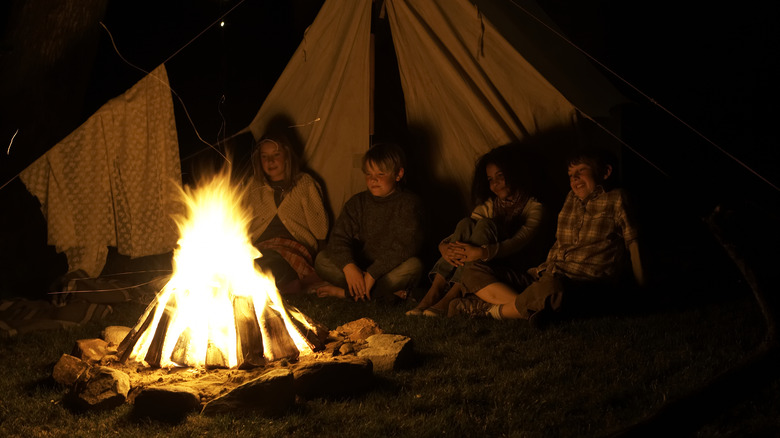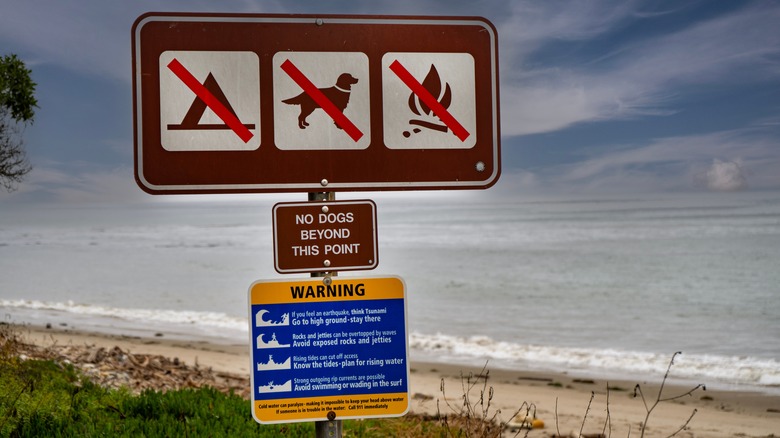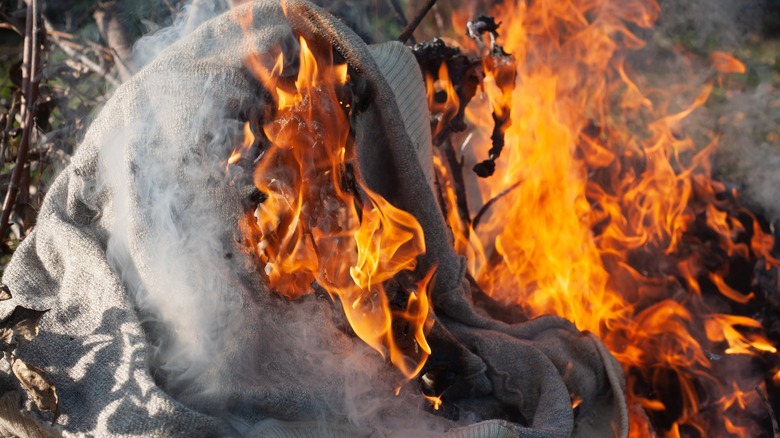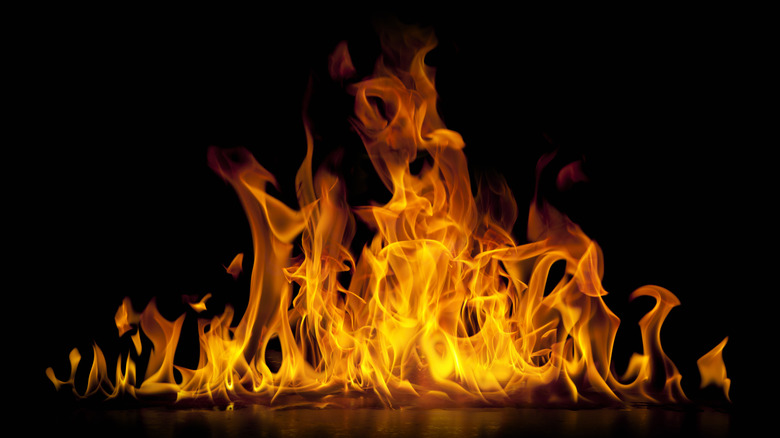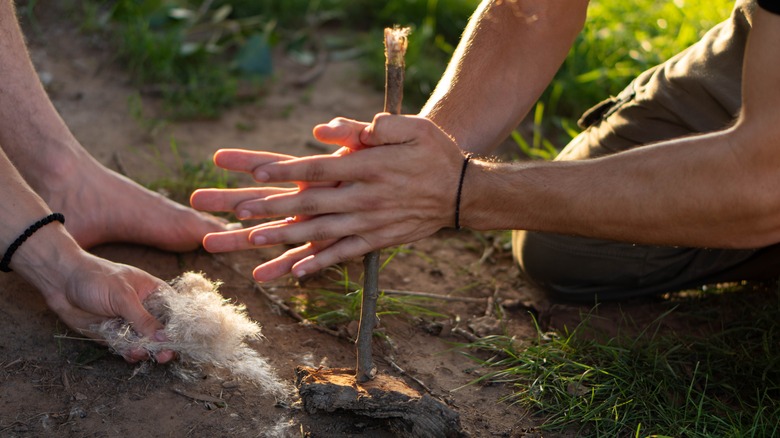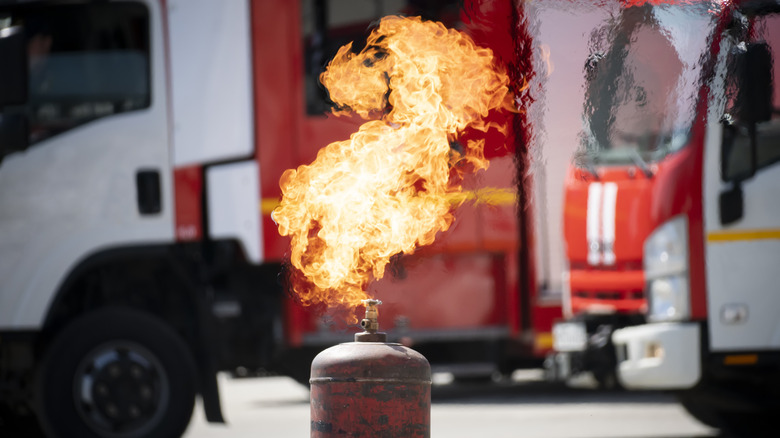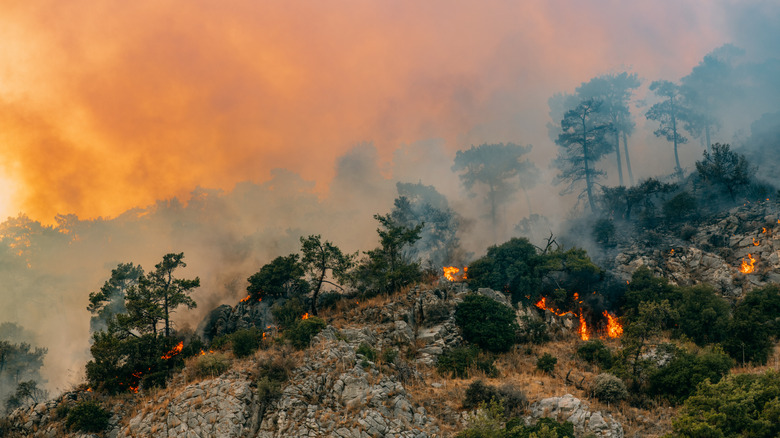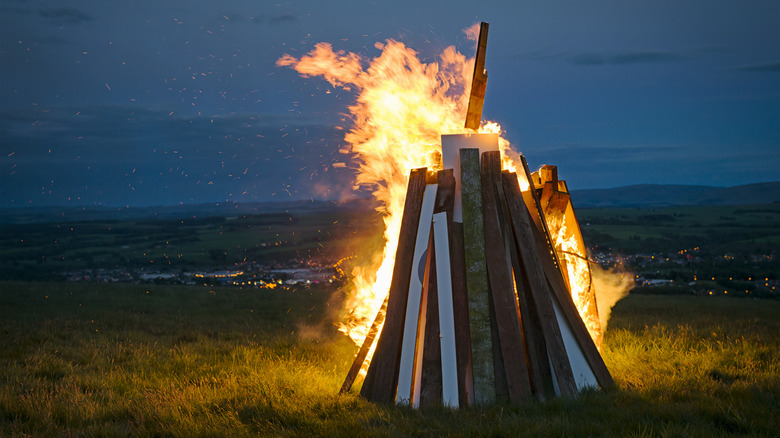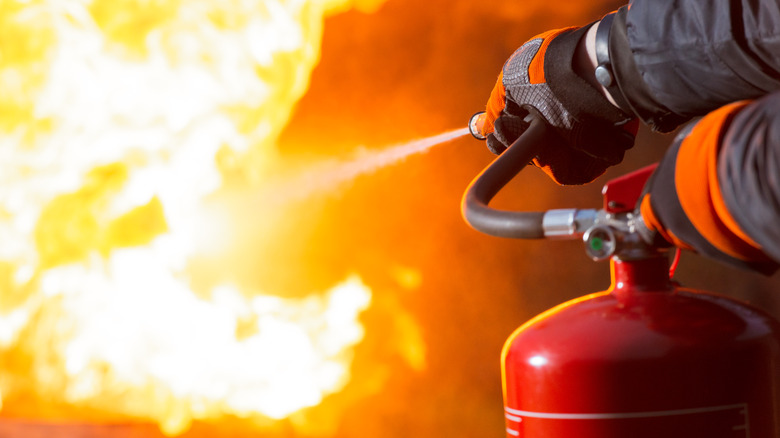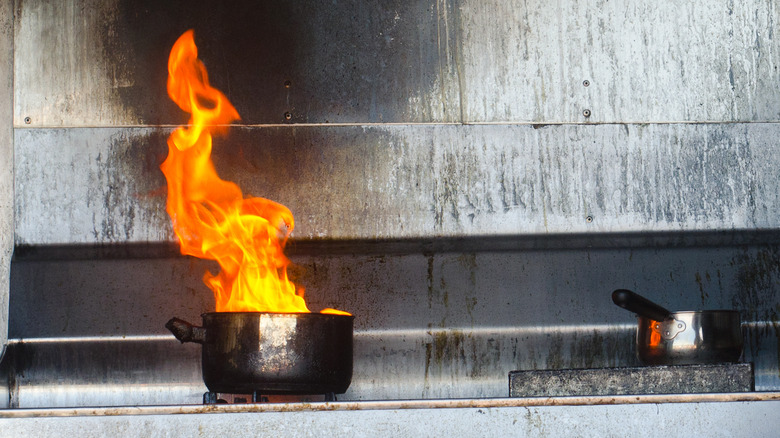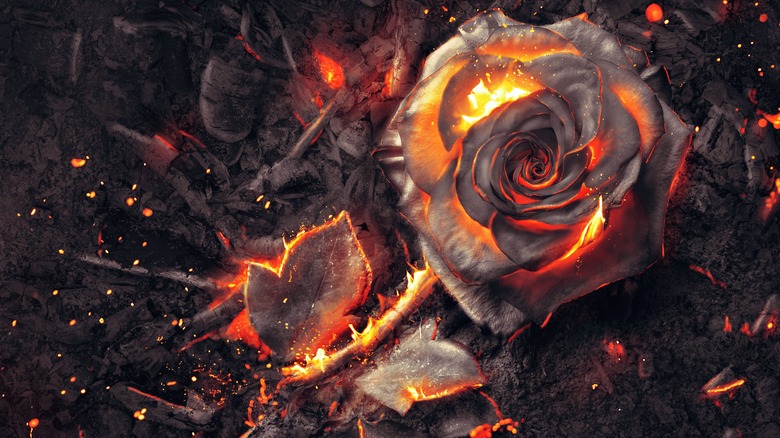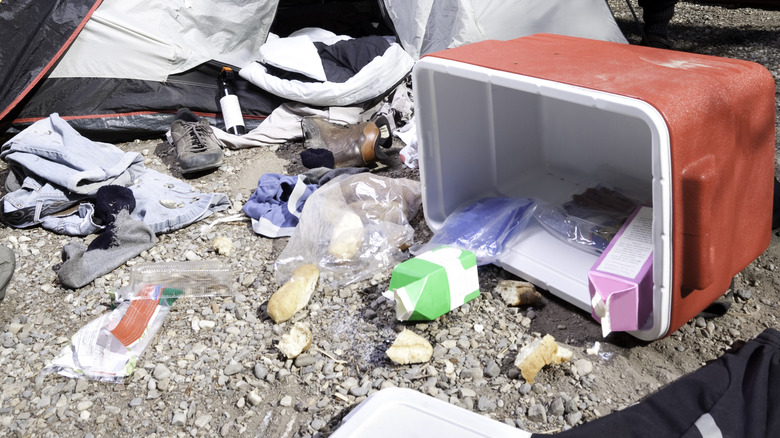Avoid Making These Massive Mistakes When Building A Campfire
There's something undeniably captivating about gathering around a crackling fire under the open sky, whether it's roasting marshmallows with friends, sharing stories with loved ones, or simply basking in the warmth on a chilly evening. Yet, as enjoyable as outdoor fires can be, they also come with a significant responsibility to ensure they are managed safely and responsibly.
In the heart of nature, where pristine landscapes and delicate ecosystems abound, the impact of our actions around fires can be profound. From the risk of accidental wildfires to the pollution of air and waterways, the consequences of negligence can reverberate far beyond the confines of the fire pit. Therefore, it is imperative that we approach outdoor fires with the utmost care, respect, and mindfulness.
Today, we will explore the essential practices for safely managing outdoor fires. From building and maintaining fires to extinguishing and cleaning up afterward, each step is crucial for minimizing risks and preserving the natural beauty of our outdoor spaces. Together, let's embrace the privilege and responsibility of enjoying fires in the great outdoors, with safety, stewardship, and sustainability leading the way in your outdoor experiences.
Not knowing the local fire regulations
Not being familiar with local regulations concerning fire building and management can carry significant consequences, both legally and for public safety. Various regions commonly enforce specific rules to guarantee the safe utilization of fires, especially in areas susceptible to wildfires or during dry periods. An often overlooked issue is that permits are mandatory for having campfires or using portable gas stoves on public lands, so ensuring these are obtained in a timely manner can prevent unwanted legal or monetary consequences.
Another critical aspect of local fire regulations is compliance with fire bans or restrictions. During times of heightened fire risk, authorities may impose bans on open fires or restrict certain activities to prevent accidental wildfires. Failure to check for and adhere to these bans or restrictions can result in fines and, more importantly, can contribute to dangerous situations that put lives and property at risk.
To prevent ignorance of local fire regulations, there are a number of proactive steps campers can take. Contacting your campsite's local fire departments, forestry services, or park authorities can offer details on any current bans or restrictions and offer guidance on safe fire-building practices. Otherwise, many government websites at the local, state/provincial, or national level provide information on fire regulations. These days, mobile apps even provide real-time information on fire bans, restrictions, and wildfire risk levels in specific regions. Lastly, as always, take the time to read any signage and understand them to ensure compliance.
Building too close to flammable materials
Fires should always be constructed at a safe distance away from anything that can easily ignite. Ignoring this precaution can result in accidental ignition and potentially catastrophic outcomes, including property damage, injuries, and even loss of life.
Similarly, failing to clear debris around the fire pit is another critical mistake that can have severe consequences. Leaves, branches, and other combustible materials near the fire pit can quickly catch fire and spread, increasing the risk of unintended wildfires. It's essential to thoroughly clean the area surrounding the fire pit before starting a fire to minimize the chances of sparks or embers igniting nearby vegetation.
When camping, individuals should be especially cautious of common flammable materials and debris. Examples include dry grass, dry moss, lichen, and brush. which are highly flammable and can ignite easily, especially during hot and dry weather conditions. Accumulations of dead leaves and pine needles on the ground can also serve as tinder for a fire and should be cleared away from the fire pit area. Often forgotten is that trees with overhanging branches can catch fire from nearby flames or sparks. It's essential to ensure there are no branches hanging directly over the fire pit. Even tents, sleeping bags, and other camping gear made from flammable materials can ignite if placed too close to the fire. Maintain a safe distance between the fire and any camping equipment.
Overloading the fire pit and building too big a fire
Overloading the fire pit with too much wood or fuel can have detrimental consequences, as it can smother the flames and impede proper airflow. This leads to a slow or inefficient burn, making it challenging to maintain a steady and safe fire. Similarly, building a fire that is too large for the fire pit can pose significant safety hazards and become difficult to control. It's crucial to maintain a manageable fire size to ensure safety and enjoyment during outdoor activities.
If available, use a designated fire ring or fire pit to contain the fire and prevent it from spreading uncontrollably. These designated areas often have built-in measures to help manage fire size and airflow. To avoid disaster, begin by building a small fire with a modest amount of fuel. This allows you to establish a strong base of hot coals, which will help ignite larger pieces of wood later on. Pro-tip: Caledonian Horticulture recommends burning with kiln-dried firewood for a more efficient burn. If you don't know how much to start with, ProCut Firewood states that one hour of fire usually burns 8-12 pieces of wood, so start with around half of that and slowly add more when the fire dies down instead of throwing them all in at once.
Using improper fire-starting techniques
Using improper fire-starting techniques can significantly hinder the ability to ignite a fire efficiently and sustain it properly. Fortunately, we've got you covered with some genius campfire-starting hacks. First and foremost, campers should ensure they have all of their materials ready and laid out in advance. This includes materials for tinder, kindling, and firewood. Ensure that your materials are dry since using wet or damp wood can inhibit combustion and lead to excessive smoke production (via Mountain Home Stove & Fireplace). This not only makes it difficult to light the fire but also reduces the heat output, making it challenging to sustain the fire once it's started. If wet wood is the only available option, try to dry it out before using it in the fire. Split the wood into smaller pieces to expose the dry interior, or place it near the heat of an existing fire to dry it out gradually.
Once you're ready to start your fire, gather and bundle your dry tinder. Small twigs, leaves, or paper to provide easily ignitable material. Gradually add kindling, such as small sticks or branches, to create a solid base for the fire. Then, arrange your firewood in a proper fire lay to facilitate ignition. Options include the teepee, log cabin, or lean-to methods, each of which has its advantages, according to Cabin Life. When you're ready to ignite, consider using commercial fire starters, such as firelighters or waterproof matches, to aid in igniting the fire, particularly in challenging conditions.
Using improper fuel
Using improper fuel for a fire can have serious consequences, both for health and the environment. Burning materials such as plastics, treated wood, or garbage can release toxic fumes and pollutants into the air, contributing to climate change and harming ecosystems. Plus, inhalation of these toxins can irritate the respiratory system, cause respiratory problems, and even lead to long-term health issues. It's essential to use the correct fuel sources when building a fire to minimize these risks and ensure a safe and environmentally friendly outdoor experience.
To minimize the negative impacts of burning improper fuel, it's crucial to use the correct fuel sources when building a fire. As we've mentioned, dry firewood burns efficiently and produces minimal smoke and pollutants, making it a suitable choice for a clean-burning fire. On top of this, be sure to firewood from untreated or natural sources (via California State Parks). As an alternative, charcoal made from natural materials, such as hardwood or coconut shells, can be used as a clean-burning option, according to Zenfiyah. Choose charcoal that is free from additives or chemicals for the best results. When choosing fire starters, pick those made from natural materials, such as wax and sawdust, to help ignite the fire without the need for harmful accelerants or chemicals.
By using the correct fuel sources, individuals can enjoy a safer and more environmentally friendly outdoor fire experience. Additionally, practicing responsible fire-building techniques and proper disposal of ashes and residues can further minimize the environmental impact of outdoor fires.
Ignoring the wind conditions
Wind plays a crucial role in the behavior of a fire. It can cause flames to shift and flicker unpredictably, making it challenging to control the fire and maintain a steady burn. Wind can also blow smoke in unexpected directions, reducing visibility. Another concern is that strong winds can carry burning embers and sparks away from the fire pit, potentially igniting nearby flammable materials or starting unintended wildfires. Ignoring wind conditions increases the likelihood of ember scatter and poses a significant fire hazard.
To avoid these consequences, individuals can employ various tricks to check for optimal wind conditions before and during fire building. Most simply, merely standing outdoors and feeling the direction and strength of the wind can provide valuable information. Look for indicators of wind direction, such as the movement of tree branches or leaves. Your weather app can also provide information about wind conditions in the area. Pay attention to wind speed to gauge potential impacts on fire behavior. Generally, it is recommended to avoid open burning when wind speeds reach 10kph (6pmh) or higher.
While your fire is burning, erect a windbreak or barrier around the fire pit to help protect the flames from strong winds. Also, use a windsock or a simple wind indicator, such as a ribbon or strip of fabric tied to a pole, to visually assess wind direction and speed. Be ready to extinguish the fire if conditions change for the worse unexpectedly.
Neglecting airflow
Neglecting airflow when building a fire refers to failing to consider the movement of air around the fire pit and its impact on the combustion process. Without adequate airflow, the fire may struggle to ignite properly, leading to frustration and wasted time and resources in attempting to start the fire. Whilst burning, insufficient airflow can result in weak flames that fail to provide adequate heat or light. A fire with poor airflow may also smolder and produce excessive smoke.
To ensure a healthy fire, arrange the fuel in the fire pit in a way that allows for proper airflow. According to Max Custom Fire Pits, this involves leaving space between your pieces to promote ventilation. They also suggest avoiding stacking the wood too tightly or blocking airflow with excessive fuel, as this can stifle the fire. If possible, use a fire grate or a raised platform to elevate the fuel off the ground and allow air to circulate beneath the fire. This helps maintain a consistent airflow and promotes more efficient combustion. Periodically stoke the fire by gently poking out any debris and rearranging the fuel to ensure proper airflow and promote combustion. This helps maintain a steady and healthy fire throughout its duration.
Adding fuel carelessly
It's crucial to exercise caution when adding fuel to a fire. Adding fuel too quickly or in large quantities can cause sudden and intense flare-ups, resulting in flames that shoot up unexpectedly. These flare-ups can catch nearby objects or individuals by surprise, increasing the risk of burns or injuries. Certain fuels, such as gasoline or propane, are highly volatile and can explode when exposed to heat or flames. Carelessly adding these fuels to a fire can lead to explosions that pose serious risks to anyone nearby, as well as causing damage to property or nearby structures. Individuals who are too close to the fire when fuel is added carelessly are at risk of sustaining burn injuries from the sudden increase in flames or the resulting explosion. The same is true for nearby property, vehicles, or equipment which can be damaged.
To prevent these consequences and ensure the safe addition of fuel to a fire, add fuel to the fire gradually and in small quantities, allowing it to ignite and burn safely. Avoid pouring large amounts of fuel onto the fire all at once, as this increases the likelihood of sudden flare-ups or explosions. Stand back from the fire when adding fuel and avoid leaning over the flames. Always warn others near the campfire to move away and maintain a safe distance.
Keep a fire extinguisher, bucket of water, or sand nearby when adding fuel to a fire. These safety measures can help quickly extinguish any unexpected flare-ups or contain fires in the event of an emergency.
Leaving the fire unattended
Unattended fires can result in damage to property, including homes, vehicles, and recreational equipment. Flames from an uncontrolled fire can engulf nearby structures or objects, causing extensive damage and requiring costly repairs. Leaving a fire unattended for even a short period can pose significant risks to individuals in the vicinity, especially kids or animals, as they may accidentally come into contact with flames or hot embers. Burns, smoke inhalation, or other injuries can occur if people are not present to monitor and control the fire.
Uncontrolled fires can also have devastating effects on the environment, including the destruction of wildlife habitats, depletion of natural resources, and pollution of air and water. Wildfires sparked by unattended fires can spread over vast areas, causing long-lasting ecological damage.
As such, always have a responsible adult present to monitor the fire and ensure it remains under control. Avoid leaving the fire unattended, even for short periods, as conditions can change rapidly. Responsible fire management is essential for ensuring the safety of people and the protection of natural resources for future generations.
Extinguishing the fire improperly
An improperly extinguished or partially extinguished campfire can smolder beneath the surface, leading to hidden hot spots that can reignite later on. Proper extinguishing measures are essential to ensure that the fire is completely out and poses no further risk of spreading or causing damage.
Before attempting to extinguish the fire, allow the flames to die down naturally or use a tool like a shovel to spread out the burning material. This helps reduce the intensity of the fire and makes it easier to control. Then, pour water over the fire, starting from the edges and working your way towards the center. Use enough water to thoroughly saturate the burning material and the surrounding area. Ensure that all visible flames are extinguished. Use a shovel or stick to stir the ashes and embers thoroughly. This helps to expose any remaining hot spots and ensures that the water penetrates deep into the fire bed to extinguish any lingering heat. To check for any hot spots, use the back of your hand to feel for heat above the fire bed and in the surrounding area. If hot spots are detected or if any flames reignite after initial extinguishing attempts, repeat the process of applying water and stirring the ashes until the fire is completely out and no heat remains.
After extinguishing the fire, monitor the area to ensure that no hot spots reignite. Keep a close eye on the fire site and be prepared to take action if necessary.
Neglecting cleanup afterward
Neglecting proper cleanup can leave behind lingering fire hazards or pollute the environment. For example, rainwater runoff can carry ashes, charred wood, and other fire debris into nearby waterways, contaminating aquatic ecosystems and harming wildlife. In addition, a fire site littered with debris and charred remains can detract from the natural beauty of the surroundings and diminish the enjoyment of the area for future visitors.
To ensure proper cleanup after a fire, it's important to remove debris and remnants from the fire site. Use a shovel or other tools to protect yourself from any hot remnants. Transfer ashes and debris to a designated disposal area away from flammable materials. Avoid dumping ashes in or near vegetation, as they can pose a fire hazard if not properly extinguished. Before leaving the site, thoroughly check for any smoldering debris. Practice Leave No Trace principles by leaving the area as you found it or better. Pack out any trash or leftover materials and leave the landscape in its natural state.
